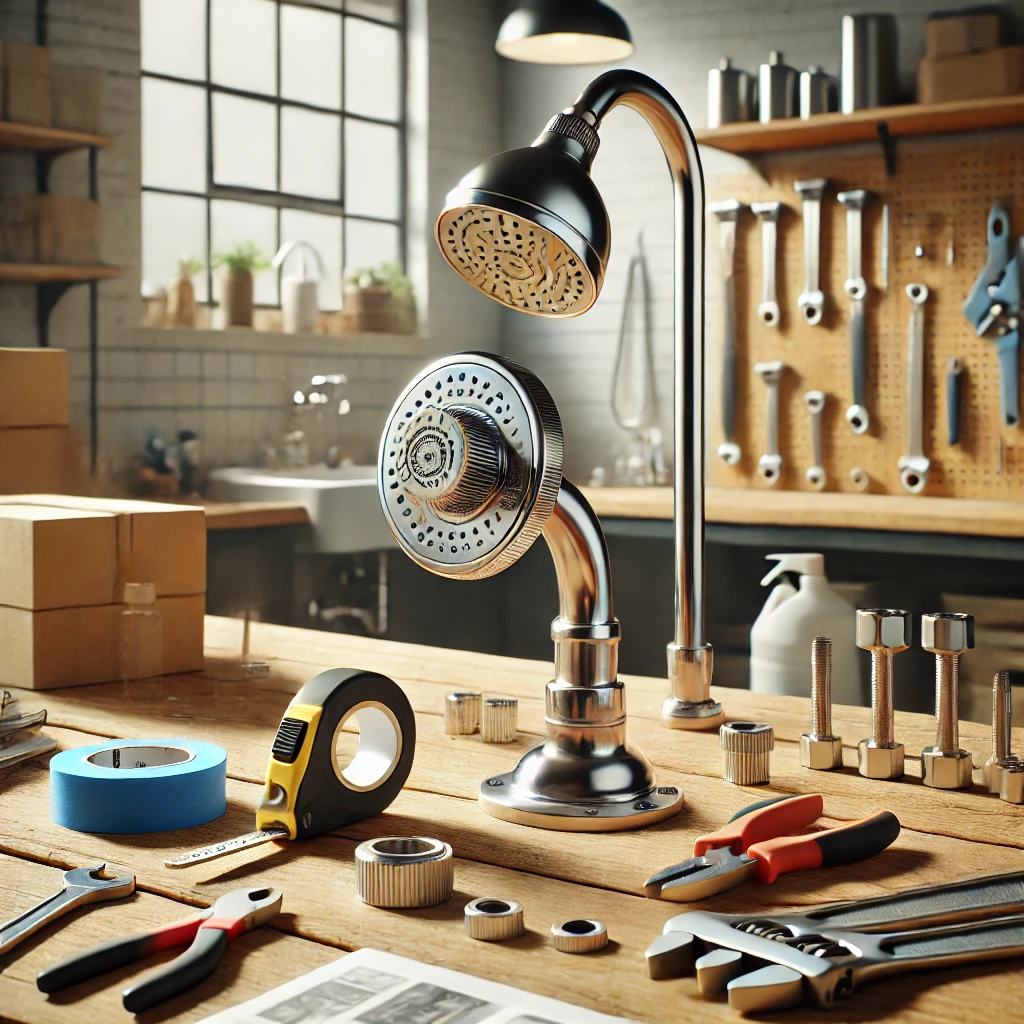Introduction
Is your showerhead old, clogged, or simply not matching your bathroom’s aesthetic? Replacing it can make a big difference in your daily routine and bathroom decor. The best part? You don’t need professional plumbing skills to swap out your showerhead. In this easy-to-follow guide, we’ll walk you through replacing a showerhead, helping you save time and money while enhancing your bathroom experience. Let’s dive in!
Table of Contents
- Tools and Materials Needed
- Types of Showerheads
- Step-by-Step Guide to Replacing Your Showerhead
- Removing the Old Showerhead
- Preparing the Shower Arm
- Installing the New Showerhead
- Testing the Installation
- Tips for Maintenance and Longevity
- Common Mistakes to Avoid
- Frequently Asked Questions
Content
1. Tools and Materials Needed
Before you start, gather these essential tools and materials:
- Adjustable wrench
- Plumber’s tape (Teflon tape)
- New showerhead
- Soft cloth (optional)
Pro Tip: Many modern showerheads are designed for tool-free installation, but having a wrench on hand is always a good idea.

2. Types of Showerheads
Choosing the right showerhead is crucial. Here are the main types:
- Fixed Showerheads: Mounted directly to the shower arm, ideal for simplicity.
- Handheld Showerheads: Attached to a flexible hose for versatile use.
- Dual Showerheads: Combine fixed and handheld options.
- Rainfall Showerheads: Large heads offering a luxurious, spa-like experience.
Select one that fits your needs and plumbing setup.
3. Step-by-Step Guide to Replacing Your Showerhead
Removing the Old Showerhead
- Turn off the water supply to avoid accidental sprays.
- Unscrew the old showerhead by turning it counterclockwise. Use an adjustable wrench if it’s too tight.
- Check the shower arm for any old plumber’s tape or debris and clean it.
Preparing the Shower Arm
- Wrap new plumber’s tape around the threads of the shower arm. This ensures a watertight seal.
- Apply 2-3 layers of tape, ensuring it’s flat and snug.
Installing the New Showerhead
- Screw the new showerhead onto the shower arm clockwise by hand.
- Tighten it gently with a wrench if needed, using a soft cloth to protect the finish.
Testing the Installation
- Turn the water supply back on.
- Run the shower to check for leaks.
- If you notice leaks, tighten the showerhead slightly or add more plumber’s tape.
4. Tips for Maintenance and Longevity
- Regularly clean the showerhead to prevent mineral buildup.
- Use a descaling solution for stubborn clogs.
- Inspect connections periodically to ensure they remain leak-free.
5. Common Mistakes to Avoid
- Over-tightening the showerhead, which can damage the threads.
- Skipping plumber’s tape, leading to leaks.
- Ignoring the water supply before starting, which can cause accidental water sprays.
6. Frequently Asked Questions
Q: Can I replace a showerhead without tools? A: Yes, many modern showerheads are designed for tool-free installation, but a wrench can be helpful for tight fittings.
Q: How often should I replace my showerhead? A: Showerheads typically last 6-10 years, but you may want to replace yours sooner for better water pressure or updated features.
Q: Is it normal for a new showerhead to drip after installation? A: A slight drip can occur initially but should stop within a few minutes. Persistent dripping may indicate a need for additional plumber’s tape.
Conclusion
Replacing a showerhead is a quick and cost-effective way to upgrade your bathroom. By following this step-by-step guide, you’ll enjoy improved water flow and an updated look in no time. Whether you’re enhancing your home for personal comfort or preparing it for resale, this DIY project is a smart move. Happy showering!